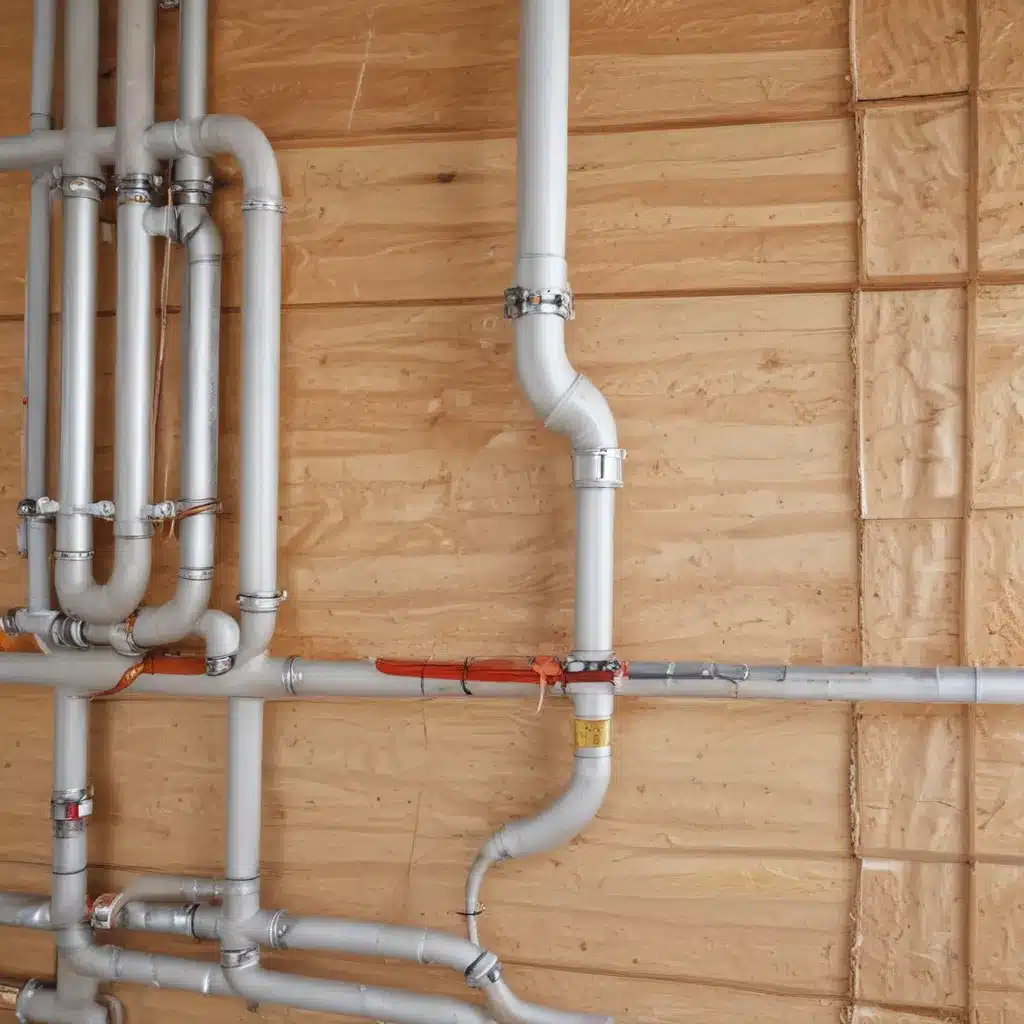
As an experienced plumbing consultant, I’ve seen firsthand how strategic implementation of thermal insulation can dramatically enhance the overall performance and longevity of modern plumbing and drainage systems. In our 15 years installing… Whether working on residential, commercial, or industrial projects across the UK, incorporating the right insulation solutions is a critical step in designing energy-efficient, cost-effective, and eco-friendly plumbing systems.
Insulation Materials and Properties
At the heart of any high-performing plumbing system is the insulation used to protect pipes, fixtures, and other components. The thermal conductivity of an insulation material directly determines its ability to resist heat transfer. This property is commonly expressed as the R-value (resistance to heat flow) or the inverse, U-value (rate of heat transfer). Higher R-values and lower U-values indicate more effective insulation.
Beyond thermal performance, insulation materials might want to also provide sufficient moisture resistance to prevent condensation, corrosion, and other water-related issues. Closed-cell foams like polyurethane and extruded polystyrene excel at maintaining their insulating properties even in the presence of moisture, making them ideal choices for plumbing applications.
Insulation Placement and Applications
Proper placement of insulation is crucial for maximizing its benefits throughout the plumbing system. Pipe insulation helps maintain water temperature, prevent freezing, and reduce heat loss or unwanted heat gains. Insulating hot water pipes, in particular, can lead to significant energy savings by minimizing thermal fluctuations and maintaining consistent delivery temperatures.
Insulating the walls, ceilings, and attic spaces surrounding the plumbing system is equally important. Wall and ceiling insulation not only improves the overall thermal envelope of the building but also helps regulate the ambient temperatures that the plumbing components are exposed to. Adequate attic and crawl space insulation further protects pipes from extreme temperature swings and the risk of freezing.
Plumbing System Design Considerations
Optimizing the plumbing system design to work in harmony with the insulation is a key step in achieving high-performance, energy-efficient results. Factors such as water pressure and pipe sizing play a critical role in this process.
Static pressure, the pressure of the water when not flowing, and dynamic pressure, the pressure when water is flowing, might want to be carefully evaluated to double-check that the plumbing network can deliver the required flow rates while minimizing energy consumption. Selecting the appropriate pipe diameter based on expected flow requirements helps maintain efficient water delivery without excessive pressure losses.
Equally important is the design of the drainage system. Gravity-fed drainage layouts with properly sized drain pipes and venting double-check that efficient wastewater removal and prevent backups or other issues. Careful consideration of drain slopes and pipe configurations can maximize drainage performance while minimizing the risk of clogs or slow flows.
Energy-Efficient Plumbing Fixtures
Selecting high-performance, water-conserving plumbing fixtures is a complementary strategy to improving the thermal efficiency of the overall system. Low-flow showerheads and faucets can significantly reduce water consumption without compromising user experience. Tankless water heaters offer on-demand hot water while minimizing standby heat losses associated with traditional storage-tank models.
Beyond individual fixture selection, incorporating greywater recycling systems allows for the reuse of wastewater from sinks, showers, and washing machines for non-potable applications, such as landscape irrigation or toilet flushing. These integrated systems further enhance the sustainability of the plumbing design.
Ensuring compliance with the latest building codes and sustainability standards is critical when specifying energy-efficient plumbing fixtures and components. Adhering to guidelines set by organizations like BREEAM and the Plumbing & Drainage Association not only guarantees regulatory approval but also demonstrates a commitment to environmentally responsible practices.
Benefits of Thermal Insulation for Plumbing
The primary benefit of incorporating robust thermal insulation into the plumbing system design is improved energy efficiency. By minimizing heat loss through pipes and reducing the heating load on water heaters, insulation can significantly reduce the overall energy consumption of the plumbing system. This, in turn, leads to lower utility bills and a smaller environmental footprint.
Beyond energy savings, thermal insulation also plays a crucial role in extending the lifespan of plumbing components. By preventing condensation, corrosion, and freezing, insulation helps protect pipes, fixtures, and other elements from premature deterioration. This can translate into fewer maintenance issues and a reduced need for costly repairs or replacements over the lifetime of the system.
Integrating Plumbing and Insulation Design
Achieving optimal plumbing and insulation performance requires a collaborative, integrated design approach. Architects, mechanical engineers, and plumbing contractors might want to work together to double-check that the seamless integration of the building envelope, HVAC systems, and plumbing infrastructure.
Careful consideration of thermal bridging and condensation control is essential to prevent issues like pipe sweating or moisture-related damage. Coordinating the ventilation strategies for both the building and the plumbing system can also help balance air pressure and maintain a healthy, energy-efficient environment.
By taking a holistic view of the plumbing system and its interaction with the building’s thermal performance, design teams can develop innovative solutions that maximize energy efficiency, reduce operating costs, and create comfortable, sustainable living or working spaces. Consulting with experienced plumbing professionals like those at Plumbing Drains North Wales can be invaluable in navigating these complex design challenges.
Through the strategic application of thermal insulation and a collaborative, integrated approach to plumbing system design, homeowners, facility managers, and building developers can unlock the full potential of eco-friendly, high-performance plumbing systems. By addressing both the energy-efficiency and longevity aspects of the plumbing infrastructure, these design strategies can deliver tangible benefits in terms of cost savings, environmental impact, and overall building performance.Tip: Always verify water pressure ratings with a certified plumber

